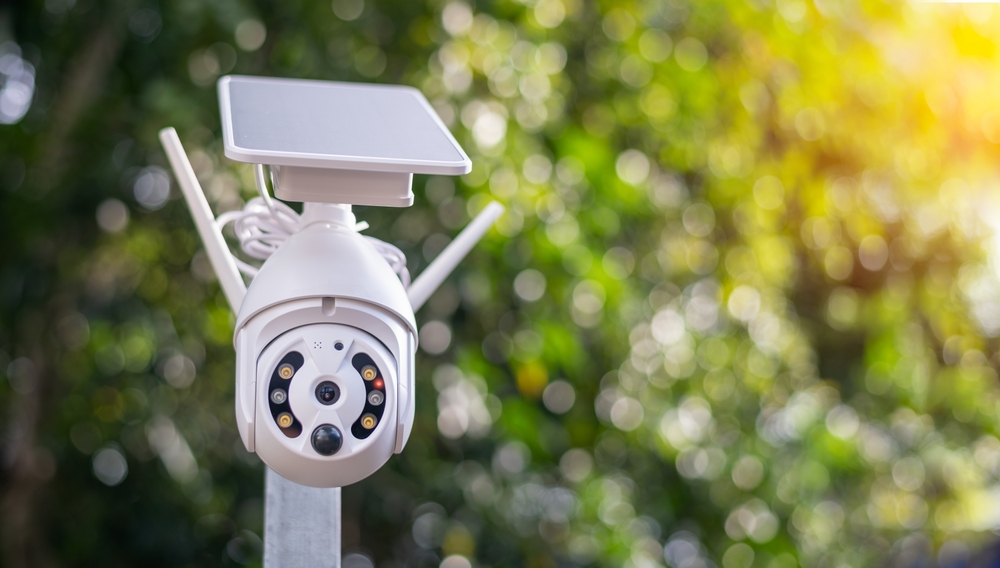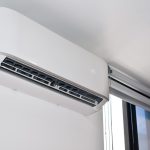Solar-powered outdoor security cameras have emerged as a game-changing innovation. These cameras promise reliable security, reduced energy costs, ease of installation and little to no maintenance since they don’t need a power source to be plugged in or constant battery charging.
Solar Power in Security Technology
Security cameras traditionally require either a wired connection to a power source or regular battery changes. This requirement can be cumbersome, costly, and geographically restrictive. Solar-powered security cameras, however, leverage solar panels to convert sunlight into electricity, storing this energy to power the camera. This technology brings an elevated level of convenience and sustainability.
Benefits of Solar-Powered Security Cameras
1. Energy Efficiency
A primary advantage of solar-powered security cameras is their energy efficiency. By utilizing an inexhaustible natural resource, these cameras can function without any added electrical cost. Once installed, they operate independently of the grid, providing consistent performance without spikes in electricity bills.
2. Easy Installation
Traditional wired security cameras require complex installations, often involving drilling, wiring, and professional setup services, which can drive up costs. In contrast, solar-powered cameras generally offer DIY-friendly installation. With no wires required, they can be mounted almost anywhere, making them an excellent option for remote locations or properties with complicated wiring situations.
3. Low Maintenance
The elimination of batteries further simplifies the maintenance process. Users no longer need to frequently change batteries or monitor power levels. As long as the solar panels remain unobstructed and clear of debris, these systems can function autonomously for extended periods.
4. Environmentally Friendly
As global concerns about resource conservation grow, solar-powered security cameras present an eco-friendly alternative to traditional energy-consuming systems. Utilizing the sun’s power, these devices have a reduced carbon footprint, aligning with sustainable living principles.
5. Flexibility in Placement
The absence of wiring constraints allows these cameras to be installed in diverse locations, from remote farmhouses to urban environments with limited infrastructure. This flexibility enables homeowners to cover all desired areas, including hard-to-reach spots that would be impractical with wired systems.
Essential Features to Consider
When evaluating solar-powered security cameras, there are several important features consumers should consider to ensure they receive the best value and performance.
1. Video Quality
High-definition video resolution is crucial for capturing clear, detailed footage. Look for cameras that offer at least 1080p resolution. Some high-end models even offer 4K clarity, enhancing the ability to zoom in on critical details without losing image sharpness.
2. Storage Options
Consider the camera’s approach to storing video footage. Options typically include local storage via SD cards and cloud storage services. While cloud storage incurs additional fees, it offers benefits such as remote access and secure backup. Local storage is cost-effective and immediate, though it can be vulnerable to damage or theft.
3. Night Vision
Effective night vision capabilities are essential for 24/7 security monitoring. Look for cameras with infrared LEDs or advanced night vision technology, which enables them to capture clear video in low-light or no-light conditions.
4. Motion Detection
Advanced motion detection features can significantly enhance security monitoring. Cameras equipped with sophisticated sensors can detect movements and trigger alerts, notifying homeowners of potential intrusions while minimizing false alarms.
5. Durability and Weather Resistance
Because they are installed outdoors, the durability of security cameras against weather elements is paramount. Opt for models with robust weatherproof ratings (usually denoted as IP ratings), ensuring they can withstand rain, dust, and extreme temperatures.
6. Connectivity and Integration
In a world increasingly dominated by smart home ecosystems, it’s beneficial to choose cameras that can integrate with other smart devices. Look for models that offer seamless connectivity with systems like Amazon Alexa, Google Assistant, or Apple HomeKit. This feature allows for greater control and convenience through voice commands and app-based interfaces.
Popular Choices in the Market
Consumers interested in purchasing a solar-powered outdoor security camera will find several reputable brands and models worth considering. Here are a few options:
- Reolink Argus 2+ with Solar Panel: Known for its robust features, this camera offers 1080p video quality, two-way audio, and advanced motion detection. Its included solar panel ensures reliable power, making it a popular choice among consumers seeking reliability and performance.
- Ring Stick Up Cam Solar: A versatile option, this camera integrates seamlessly with the Ring ecosystem, offering live view and mobile notifications. Its HD video quality and customizable motion zones enhance security while maintaining ease of use.
- Arlo Pro 3 Surveillance System: This high-end model provides 2K video resolution and color night vision. Its weather-resistant design and robust battery life, complemented by solar charging capabilities, make it highly reliable for comprehensive home security.
Maximizing Effectiveness
To ensure optimal performance from a solar-powered security camera, strategic installation and maintenance practices are key.
1. Optimal Placement of Solar Panels
For efficient power generation, solar panels must be placed to receive maximum sunlight throughout the day. It’s important to consider potential obstructions, such as trees or tall structures, that could cast shadows over the panels and impact energy intake.
2. Regular Maintenance Checks
While maintenance is minimal, periodic checks are necessary to ensure equipment longevity. This involves cleaning the solar panels to remove dust and debris, as well as inspecting the camera for any signs of physical damage.
3. Firmware Updates
Manufacturers regularly release firmware updates to enhance features and improve device security. Users should ensure their cameras are running the latest firmware to take advantage of any improvements or bug fixes.
4. Use of Backup Storage
As an added precaution, consider using a combination of local and cloud storage for video footage. This dual approach ensures that crucial data is preserved even in the event of physical damage to the camera or SD card.
Potential Drawbacks and Considerations
While solar-powered security cameras offer a host of benefits, they do have some limitations that consumers should be aware of:
1. Dependence on Sunlight
These cameras rely heavily on solar energy, which can be a limitation in regions with insufficient sunlight or during extended periods of overcast weather. However, many models come equipped with rechargeable batteries that provide continuous power during low-light conditions.
2. Initial Cost
Although they save money in the long run by reducing electricity bills, the upfront cost of solar-powered security cameras and accompanying panels can be higher than traditional models. Consumers should weigh the initial investment against potential long-term savings and benefits.
Solar-powered outdoor security cameras offer a modern, sustainable, and efficient way to enhance home security. With no need for wiring or battery changes, they provide a hassle-free solution that appeals to eco-conscious consumers and those seeking flexibility in device placement. By considering factors such as video quality, storage options, and durability, consumers can make informed decisions that best suit their security needs and budget. These innovative devices embody a forward-thinking approach to home security, providing peace of mind while aligning with global sustainability goals.



